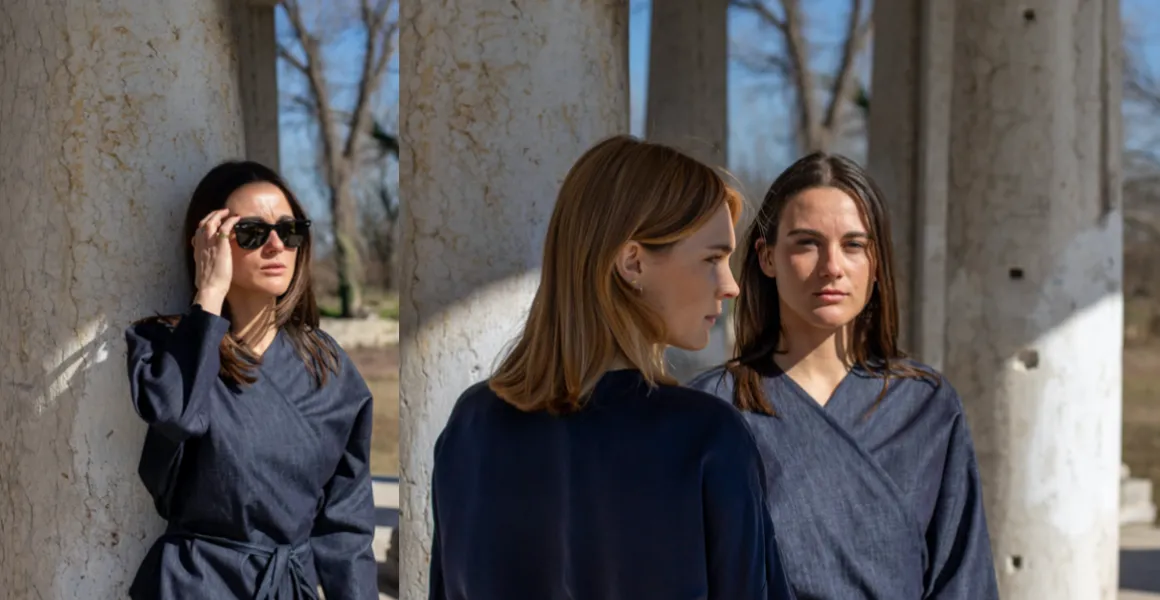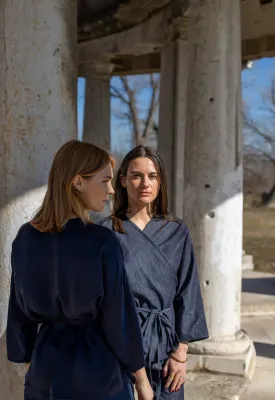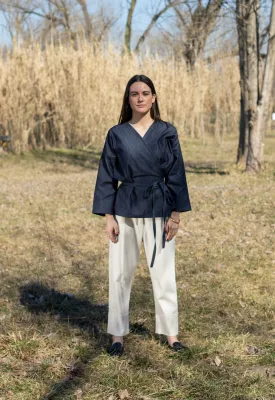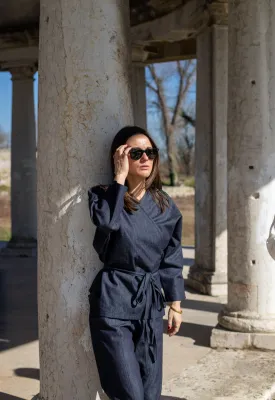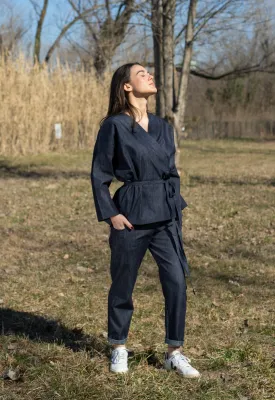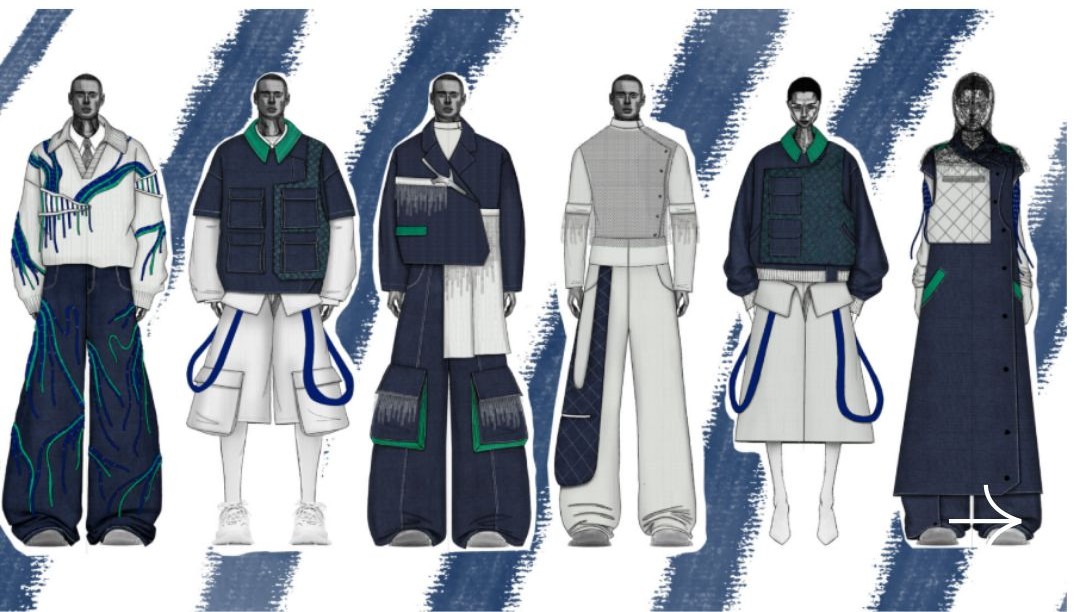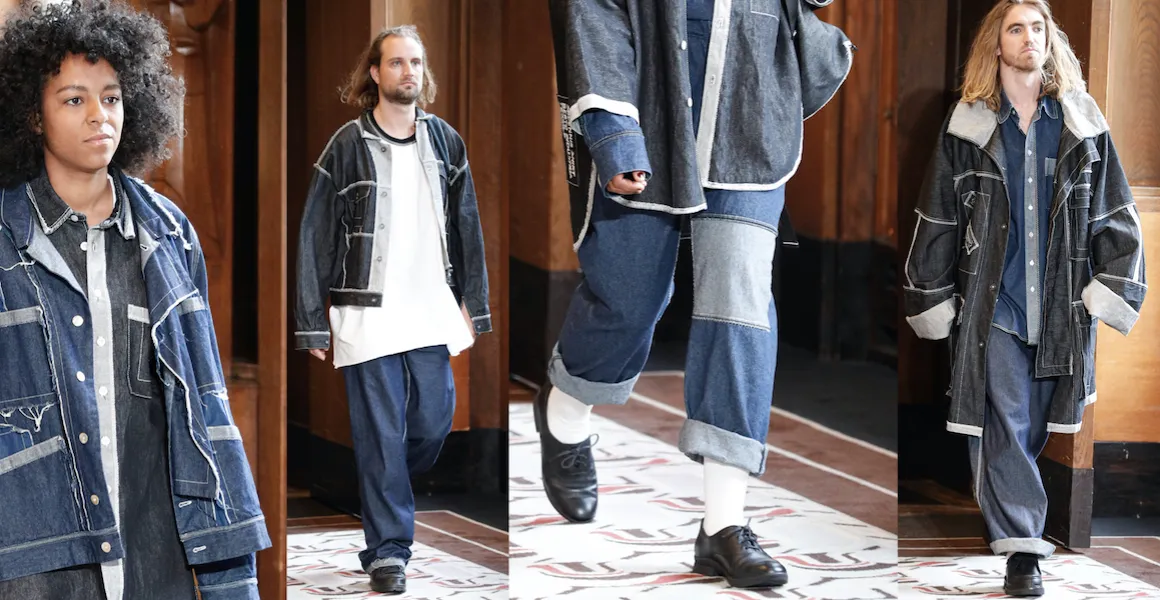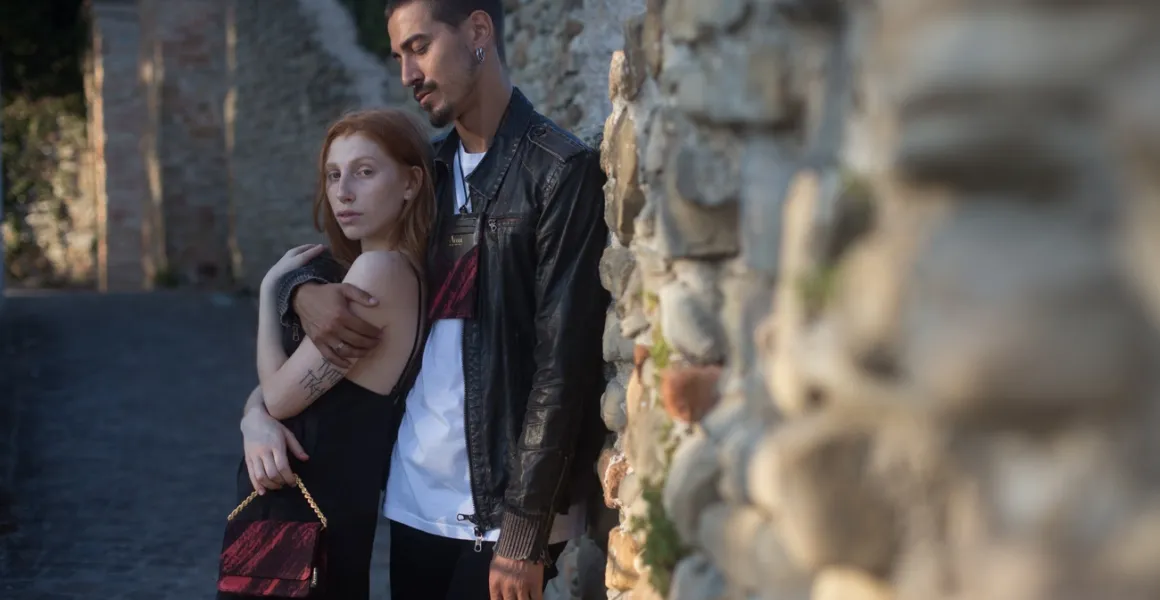What was your first project?
My thesis was probably my first real project and one of the first where I engaged with sustainability as an essential principle. I wanted the materials to dictate the ideas, shapes, and garment patterns to me, not the other way around. Following an inspiration and then finding fabrics that would adapt to it. It seemed the best way to avoid compromising between aesthetics and sustainability. With Filotimo, I try to follow the same design model.
The creative process: do you work instinctively or plan every single step? Where do your ideas come from?
Unfortunately, I’m not a methodical and organized person. In some cases, being organized would help me a lot, but I’ve also realized that if I over-plan things, I end up feeling limited in my ideas. The first part of my creative process is very instinctive. Some things work immediately and come to fruition with surprising naturalness, while others don’t. Given my nature, I would be tempted to abandon them and think about something else. Over the years, however, I’ve learned that having some persistence in these cases helps avoid giving up on projects with great potential that just need some “fine-tuning.” Regarding ideas, in most cases they come from who knows where and at completely random moments. For the more planned ones, however, it helps me tremendously to observe details, watch a film attentively, read a book while underlining striking phrases, take a different route home and see new alleyways, new houses…
What did you think when Berto contacted you?
To tell the truth, I was the one who first contacted you. A girl I know had told me about you and your “Berto for Young Talents” project, and it immediately struck me. For small businesses like mine, approaching large, structured companies is always an epic undertaking and often inconclusive. I think that’s a shame though. There are businesses that start small but have great potential, and if no one is willing to trust them and invest in them, what chance do they have to grow? That’s why I found your project forward-thinking, which is a great thing these days. When we actually started collaborating, I realized it wasn’t just a facade project, but a real way to help many young designers. I found in Francesca a competent and helpful figure who patiently answered my doubts and questions, some quite basic since I was approaching the denim world for the first time.
Which Berto fabrics have you worked with for your project and collections?
I primarily used two types of fabric: EDEN and NATURAL, both 100% organic cotton, in both indigo and natural versions.
What do you consider the most significant aspect of Berto for Talents? What goals have you been able to achieve through this program?
See answer 4 🙂
“Less but better” can be read as an endorsement of a certain degree of purity in design but also in fashion design. It can also be understood as an environmental message about reduction and sustainability. What do you think?
I believe it’s the starting point for a new way of experiencing fashion and, more generally, everyday life. It’s now clear to everyone that we have more than we need and consume more than our planet can produce. Often people think that giving up quantity is a deprivation, but I believe it’s just a matter of changing perspective. It’s essential to rediscover quality in terms of materials, care, and the slowness of the production process.
Is there something you’ve never done that you’d like to accomplish?
Too many things. There are many ideas but they require a lot of time and attempts, which I don’t always manage to fit into daily commitments. Certainly, the search for new materials is at the top of our priorities, then there’s a hypothetical men’s line that we’ve been talking about for a while but hasn’t taken shape yet.
